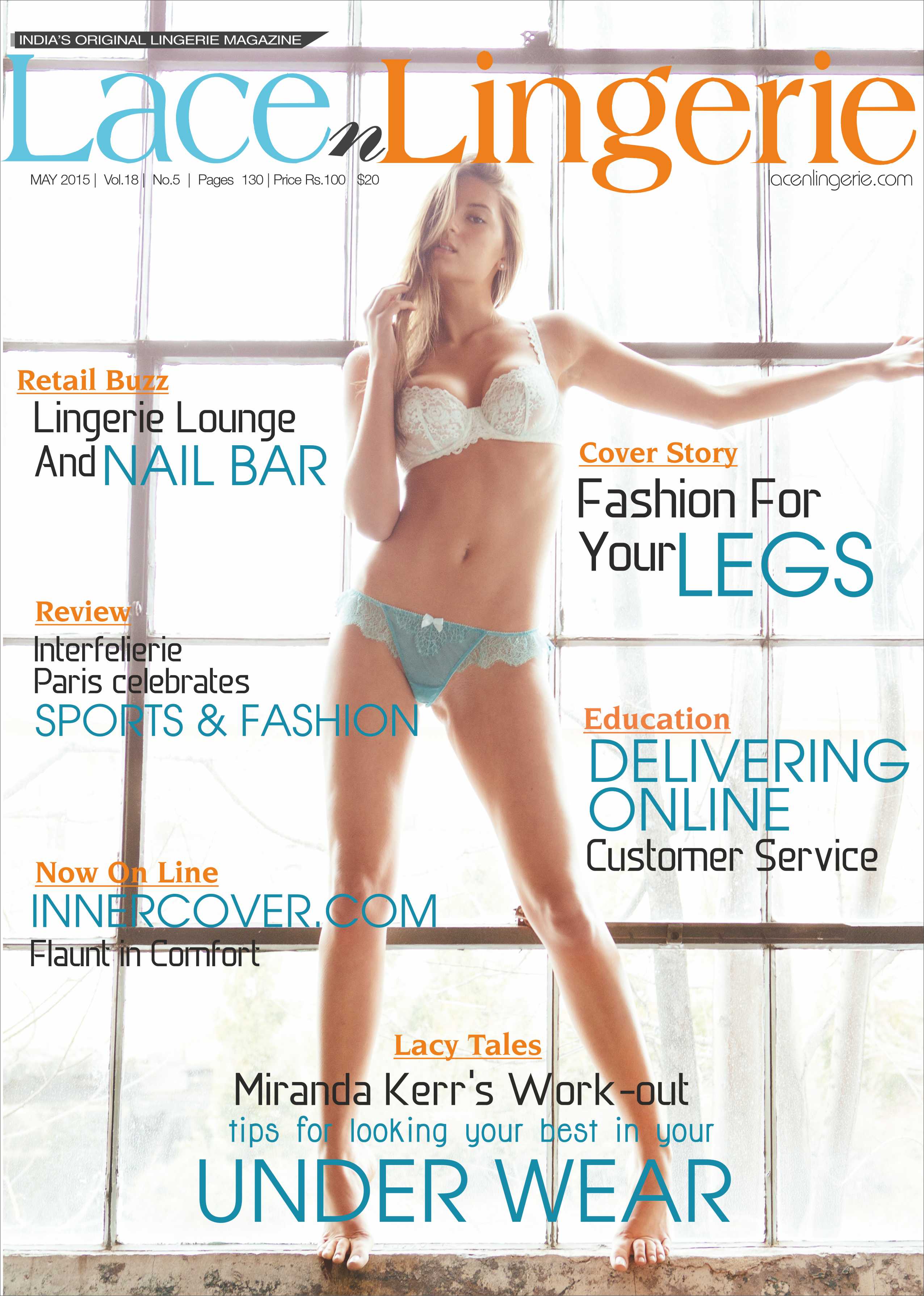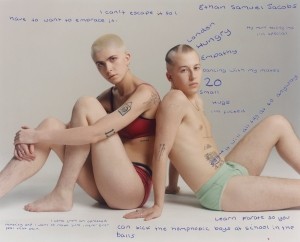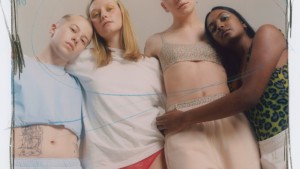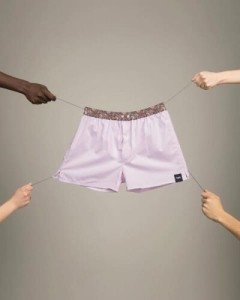Underwear brands are revolutionizing the industry, leveraging inclusion, sustainability and the ability to sense customer needs.
In the 2000 film What Women Want, Mel Gibson tries on stockings, underwear and makeup, suggesting that to understand a woman’s true desires and feelings, it’s best to live her life. Fast forward to 2021, and fueled by social media and direct-to-consumer business model opportunities, independent lingerie brands have fully embraced this approach, recognizing that listening to women is more important than ever.
Lingerie Market: The lingerie market (worth $42 billion in 2020) has changed dramatically over the past two decades, especially in the wake of the #MeToo movement and its legacy, creating new opportunities for a new generation represented by millennials younger, and wave feminism opened its way and Gen- Z embodies new gender dynamics, social norms and value systems.
Niche underwear companies are now making money in Europe by leveraging their commitment to inclusion, sustainability, and the ability to anticipate customer needs. This has sparked a revolution in the market that doesn’t appear to be slowing down.
New trends in the lingerie industry are really a result of a larger cultural shift.
Niche Brands: Federica Tiranti, Creative Director of Chité Milano, an Italian lingerie company that has gained a following on social media, claimed that she and cofounder and CEO Chiara Marconi began working together on the project in 2018 after realising that “women had changed so much in the past 10 years, becoming more independent and entrepreneurial, thus changing their own perception of their femininity.”
According to Marconi, the brand’s ideology encourages women to express themselves without inhibition and with a humanistic mindset. Intimacy, both literal and metaphorical, was how she described the category: “If you gather five women for a chat around a table placing a lingerie set on it, the conversation naturally revolves around so many different topics such as gender identity, intimacy, period, women’s liberation, fashion and wellness.”
Rees, who was a cofounder of Agent Provocateur in the 1990s, explored the evolution of underwear over different decades in the book “Agent Provocateur: A Celebration of Femininity” and noted that something cracked in the ’90s.
“We were kind of telling women, ‘Hey, don’t be afraid of your sexuality, you own it, it’s yours, you do with it what you want.'” But because that is precisely what happened next, we weren’t advocating that you strip off, show everyone everything, and post it online, she argued.
We’ve had it with marketers winking and sneering at the feminine figure, said Marconi from Chité Milano, naming Victoria’s Secret as one such instance. In contrast, the brand wants to convey a message of self-acceptance and self-love, which is consistent with today’s consumers’ overall value systems.
Women who “were disappointed by classic lingerie brands that are really restricting both their body and their mind,” according to Schott, were what motivated her to launch her company in late 2020.
The founders of independent lingerie firms believe that the industry has frequently and inadequately acknowledged women’s wants and wishes. As a result, they feel compelled to constantly be listening in order to avoid the mistakes that established labels have encountered.
Consumer Response: For instance, during a year off, Schott drew on her seven years as CEO of Etam and ten years of expertise in the knickers industry to conduct 100 interviews with French women between the ages of 15 and 75 and to distribute a survey that received close to 4,000 responses.
Schott saw that the lingerie industry was failing to speak to women enough and running the risk of growing further apart from the consumers it was trying to reach. She said, “It is rather startling because we’re talking about intimacy and the body so it’s quite strange that all these businesses are taking care of our body or intimacy but don’t talk to us.”
Similar to this, she found that 50% of women either don’t wear bras at all or do so very sometimes and for social reasons. Despite making up 5% of the world’s population as of mid-2019 and include the trendier, better educated, and younger clients, Schott claims that the former group is even more ignored by the industry.
“I realise that lingerie businesses don’t want to embrace this trend because it goes against the nature of their company, but if you make lingerie, you can’t just ignore speaking to these ladies and attempting to understand why they don’t like your products,” she added.
Rees, the creator of Les Girls Les Boys, also observed that women seek support and comfort while still looking and feeling nice, even if they don’t want to wear corseted underwear or other construct pieces of clothing. This is especially true in the recent year, which has been characterised by confinement. Sales of larger underwear items, softer bras and sweats have surged by 400%.
It pays off to have a fruitful interaction with female customers because these firms have developed a reputation and a social media following as a result of a dedicated and active community. While Rees praised Les Girls Les Boys’ feedback section for enabling the brand to continually improve, Schott maintains her editorial website Bra Revolution and maintains contact with customers through the brand’s e-commerce site.
In reaction to realising that 80% of women wear the incorrect bra size and cup, leading to an uncomfortable and unsatisfactory relationship with undergarments, the founders of Chité Milano were inspired by the brand’s community to establish the MyChité customisation service.
Customers can choose from a variety of fabrics and colours and have lingerie sets custom-made by artisans in the Piedmont region, providing the ultimate size-inclusive shopping experience. This service currently represents one-third of the company’s revenue.
Schott emphasised how the Ana Shaf outfits fit all sizes and have three different nude colours to suit diverse skin tones. “In my opinion, inclusion should start when you design products and choose fabrics,” she stated.
“I included inclusivity in my goals from the beginning, knowing that it’s not only about campaign imagery but also about how I run the business so that women of all sizes and skin tones will feel comfortable and included,” she observed.
“Too many brands have extremely inclusive worldwide communication strategies, yet their size selection is lacking, and their online product displays only feature one body type and one skin tone. Tokenism might best describe this.
Rees also started Les Girls Les Boys in reaction to a lack of diversity in the industry with the intention of providing customers, regardless of their identification, with feel-good intimate wear and loungewear with a ‘from bed to street’ aesthetic.
It all boils down to having integrity in all they do for niche lingerie manufacturers.
These businesses take a unique approach to sustainability, frequently seeing it as interwoven in the company culture, fully embracing the demands and wishes of the outspoken younger communities they target.
Ana Shaf has outlawed the use of plastics and polybags in favour of paper packaging and employs Oeko-Tex certified textiles and Supima cotton.
According to Rees, sustainability also means offering high-quality, reasonably priced goods that are produced locally. I think we can produce a sustainable product pretty locally, using sustainable materials, and in a way that truly takes care of the workers and employees,” she said. Organic cotton is used to make the sweatshirts and jerseys at Les Girls Les Boys.
In the 2000 film What Women Want, Mel Gibson tries on stockings, underwear and makeup, suggesting that to understand a woman’s true desires and feelings, it’s best to live her life. Fast forward to 2021, and fueled by social media and direct-to-consumer business model opportunities, independent lingerie brands have fully embraced this approach, recognizing that listening to women is more important than ever.
Lingerie Market: The lingerie market (worth $42 billion in 2020) has changed dramatically over the past two decades, especially in the wake of the #MeToo movement and its legacy, creating new opportunities for a new generation represented by millennials younger, and wave feminism opened its way and Gen- Z embodies new gender dynamics, social norms and value systems.
Niche underwear companies are now making money in Europe by leveraging their commitment to inclusion, sustainability, and the ability to anticipate customer needs. This has sparked a revolution in the market that doesn’t appear to be slowing down.
New trends in the lingerie industry are really a result of a larger cultural shift.
Niche Brands: Federica Tiranti, Creative Director of Chité Milano, an Italian lingerie company that has gained a following on social media, claimed that she and cofounder and CEO Chiara Marconi began working together on the project in 2018 after realising that “women had changed so much in the past 10 years, becoming more independent and entrepreneurial, thus changing their own perception of their femininity.”
According to Marconi, the brand’s ideology encourages women to express themselves without inhibition and with a humanistic mindset. Intimacy, both literal and metaphorical, was how she described the category: “If you gather five women for a chat around a table placing a lingerie set on it, the conversation naturally revolves around so many different topics such as gender identity, intimacy, period, women’s liberation, fashion and wellness.”
Rees, who was a cofounder of Agent Provocateur in the 1990s, explored the evolution of underwear over different decades in the book “Agent Provocateur: A Celebration of Femininity” and noted that something cracked in the ’90s.
“We were kind of telling women, ‘Hey, don’t be afraid of your sexuality, you own it, it’s yours, you do with it what you want.'” But because that is precisely what happened next, we weren’t advocating that you strip off, show everyone everything, and post it online, she argued.
We’ve had it with marketers winking and sneering at the feminine figure, said Marconi from Chité Milano, naming Victoria’s Secret as one such instance. In contrast, the brand wants to convey a message of self-acceptance and self-love, which is consistent with today’s consumers’ overall value systems.
Women who “were disappointed by classic lingerie brands that are really restricting both their body and their mind,” according to Schott, were what motivated her to launch her company in late 2020.
The founders of independent lingerie firms believe that the industry has frequently and inadequately acknowledged women’s wants and wishes. As a result, they feel compelled to constantly be listening in order to avoid the mistakes that established labels have encountered.
Consumer Response: For instance, during a year off, Schott drew on her seven years as CEO of Etam and ten years of expertise in the knickers industry to conduct 100 interviews with French women between the ages of 15 and 75 and to distribute a survey that received close to 4,000 responses.
Schott saw that the lingerie industry was failing to speak to women enough and running the risk of growing further apart from the consumers it was trying to reach. She said, “It is rather startling because we’re talking about intimacy and the body so it’s quite strange that all these businesses are taking care of our body or intimacy but don’t talk to us.”
Similar to this, she found that 50% of women either don’t wear bras at all or do so very sometimes and for social reasons. Despite making up 5% of the world’s population as of mid-2019 and include the trendier, better educated, and younger clients, Schott claims that the former group is even more ignored by the industry.
“I realise that lingerie businesses don’t want to embrace this trend because it goes against the nature of their company, but if you make lingerie, you can’t just ignore speaking to these ladies and attempting to understand why they don’t like your products,” she added.
Rees, the creator of Les Girls Les Boys, also observed that women seek support and comfort while still looking and feeling nice, even if they don’t want to wear corseted underwear or other construct pieces of clothing. This is especially true in the recent year, which has been characterised by confinement. Sales of larger underwear items, softer bras and sweats have surged by 400%.
It pays off to have a fruitful interaction with female customers because these firms have developed a reputation and a social media following as a result of a dedicated and active community. While Rees praised Les Girls Les Boys’ feedback section for enabling the brand to continually improve, Schott maintains her editorial website Bra Revolution and maintains contact with customers through the brand’s e-commerce site.
In reaction to realising that 80% of women wear the incorrect bra size and cup, leading to an uncomfortable and unsatisfactory relationship with undergarments, the founders of Chité Milano were inspired by the brand’s community to establish the MyChité customisation service.
Customers can choose from a variety of fabrics and colours and have lingerie sets custom-made by artisans in the Piedmont region, providing the ultimate size-inclusive shopping experience. This service currently represents one-third of the company’s revenue.
Schott emphasised how the Ana Shaf outfits fit all sizes and have three different nude colours to suit diverse skin tones. “In my opinion, inclusion should start when you design products and choose fabrics,” she stated.
“I included inclusivity in my goals from the beginning, knowing that it’s not only about campaign imagery but also about how I run the business so that women of all sizes and skin tones will feel comfortable and included,” she observed.
“Too many brands have extremely inclusive worldwide communication strategies, yet their size selection is lacking, and their online product displays only feature one body type and one skin tone. Tokenism might best describe this.
Rees also started Les Girls Les Boys in reaction to a lack of diversity in the industry with the intention of providing customers, regardless of their identification, with feel-good intimate wear and loungewear with a ‘from bed to street’ aesthetic.
It all boils down to having integrity in all they do for niche lingerie manufacturers.
These businesses take a unique approach to sustainability, frequently seeing it as interwoven in the company culture, fully embracing the demands and wishes of the outspoken younger communities they target.
Ana Shaf has outlawed the use of plastics and polybags in favour of paper packaging and employs Oeko-Tex certified textiles and Supima cotton.
According to Rees, sustainability also means offering high-quality, reasonably priced goods that are produced locally. I think we can produce a sustainable product pretty locally, using sustainable materials, and in a way that truly takes care of the workers and employees,” she said. Organic cotton is used to make the sweatshirts and jerseys at Les Girls Les Boys.
















